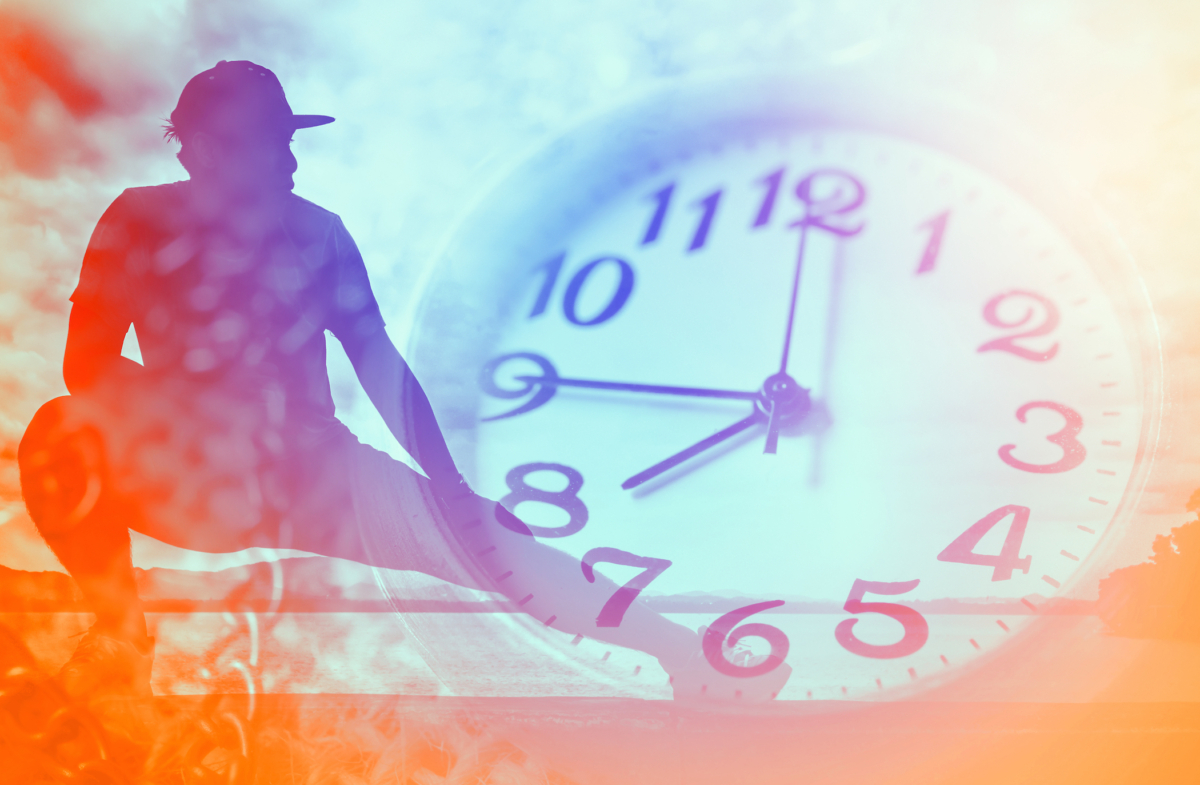


If people burn more fat on the days they exercise before eating, rather than afterward, why doesn’t this translate into more weight loss?
A systematic review and meta-analysis on exercise timing for fat metabolism found that exercising in a completely fasted state may work best. The Japanese team that published some of the seminal work in this area went as far as to assert: “If exercise were a pill to burn body fat, it would be effective only when taken before breakfast.” Surveys show few people exercise before breakfast, though. Before asking people to make the switch, we need to make sure that these tantalizing 24-hour results translate into weight loss over the long term. There’s a solid theoretical basis, but you don’t know until you put it to the test.
In a study of experimental weight gain, volunteers were fed up to 4,500 calories a day for six weeks while vigorously exercising a total of 300 minutes a week, either always after an overnight fast or after a meal. A control group who didn’t exercise at all gained about 6.5 pounds, compared to 3 pounds in the exercise-after-a-meal group. The pre-meal exercise group worked out the same amount, but only gained about half as much—1.75 pounds. What about weight loss, though?
Twenty young women were randomized into three hours a week of before or after a meal exercise. Same diets, same amount of exercise, and, disappointingly, about the same amount of weight loss. The pre-meal exercise group did lose about an extra pound of body fat (total weight loss 3.5 pounds versus. 2.2 pounds), but this did not reach statistical significance, meaning such a small difference could very well have been due to chance. A study of six weeks of low-volume, high-intensity interval training before or after meals similarly failed to show a difference.
One explanation that’s been offered for this failure is that the increased fat loss during pre-meal exercise might be “neutralized” by the lesser diet-induced thermogenesis. In other words, because it costs our body fewer calories to process food if we eat after, compared to before, physical activity. When we exercise after a meal, our body gets mixed signals. Exercise is all about mobilizing energy stores for fuel, whereas eating is more about assimilation and storage, and the metabolic challenge presented by the ensuing “hormonal tug-of-war” might be responsible for the 15 to 40 percent greater calorie cost.
This has led some to recommend exercising after meals to facilitate weight loss. If you do the math, though, our body is so efficient at digesting that the 15 percent to 40 percent increase might only come out to be three to 12 calories. Such a slight difference would be easily overwhelmed by the huge disparity in fat loss, as confirmed by the 24-hour fat balance studies, showing up to 500 calories of fat-burning difference.
I would suggest a more reasonable explanation might be that the clear body fat deficit on pre-meal exercise days is made up for by extra fat storage on non-exercise days. Your body likes to hold on to extra body fat if it can, and so on days you’re not driving it down, it may try to even things out. Both of the failed weight loss studies had people exercising only three days a week, so, their bodies had most of the week to compensate. The study I’d like to see is pre-meal versus post-meal exercise, on all or at least most days of the week, to see if we can continue to drive down fat stores.
For those with diabetes, though, you’d want to do the opposite. You can imagine how the siphoning effect muscles have on excess blood sugar during exercise might be great for those suffering from elevated blood sugars. And indeed, exercising after a meal can bring down blood sugars as well as some blood sugar-lowering drugs. Randomized Type 2 diabetics took a 20-minute leisurely stroll (about 2 mph) before dinner versus after dinner, and the after-dinner group blunted their blood sugar spike 30 percent. Same meal, same amount of exercise, but a significant effect on blood sugar control thanks to a little tactical timing. Even just a 10-minute walk after a meal may make a difference. So, for those with blood sugar problems, it’s better to exercise after meals than before them.
Blood sugar from a meal starts appearing in the bloodstream 15 to 20 minutes after the first bite and is ramping up by 30 minutes to peak at around the one-hour mark before declining to pre-meal levels within a few hours. So, for optimal blood sugar control, prediabetics and diabetics should start exercising 30 minutes after the start of a meal, and ideally go for an hour to completely straddle the blood sugar peak. If you had to choose a single meal to exercise after, it would be dinner, due to the circadian rhythm of blood sugar control that wanes throughout the day. Ideally, then, breakfast would be the largest meal of the day, and you’d exercise after that, or exercise after every meal.
Republished from NutritionFacts.org
◇ Sources cited:
